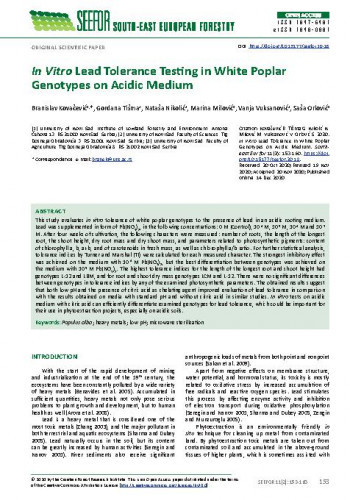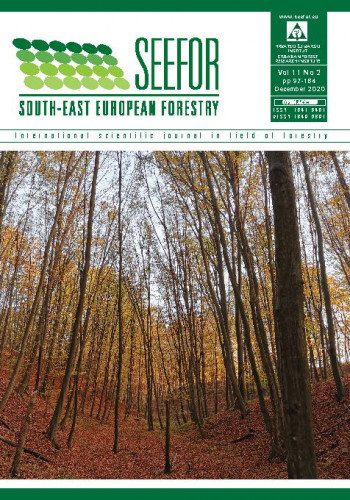This study evaluates in vitro tolerance of white poplar genotypes to the presence of lead in an acidic rooting medium. Lead was supplemented in form of Pb(NO3)2, in the following concentrations: 0 M (Control), 10-6 M, 10-5 M, 10-4 M and 10-3 M. After four weeks of cultivation, the following characters were measured: number of roots, the length of the longest root, the shoot height, dry root mass and dry shoot mass, and parameters related to photosynthetic pigments: content of chlorophyll a, b, a+b, and of carotenoids in fresh mass, as well as chlorophyll a/b ratio. For further statistical analysis, tolerance indices by Turner and Marshal (TI) were calculated for each measured character. The strongest inhibitory effect was achieved on the medium with 10-4 M Pb(NO3)2, but the best differentiation between genotypes was achieved on the medium with 10-5 M Pb(NO3)2. The highest tolerance indices for the length of the longest root and shoot height had genotypes L-12 and LBM, and for root and shoot dry mass genotypes LCM and L-12. There were no significant differences between genotypes in tolerance indices by any of the examined photosynthetic parameters. The obtained results suggest that both low pH and the presence of citric acid as chelating agent improved evaluation of lead tolerance in comparison with the results obtained on media with standard pH and without citric acid in similar studies. In vitro tests on acidic medium with citric acid can efficiently differentiate examined genotypes for lead tolerance, which could be important for their use in phytoextraction projects, especially on acidic soils.
Sažetak

 South-east European forestry : SEEFOR : international scientific journal in field of forestry : 11,2(2020) / editor-in-chief Ivan Balenović.
South-east European forestry : SEEFOR : international scientific journal in field of forestry : 11,2(2020) / editor-in-chief Ivan Balenović.